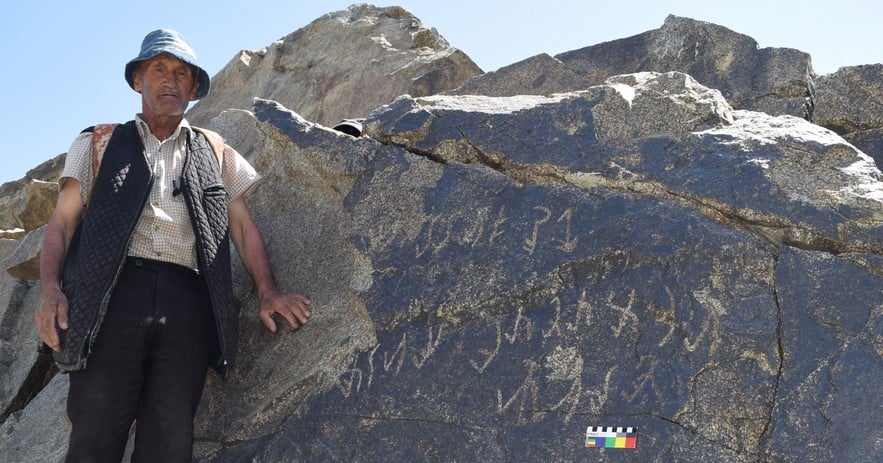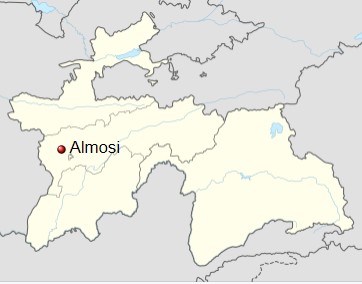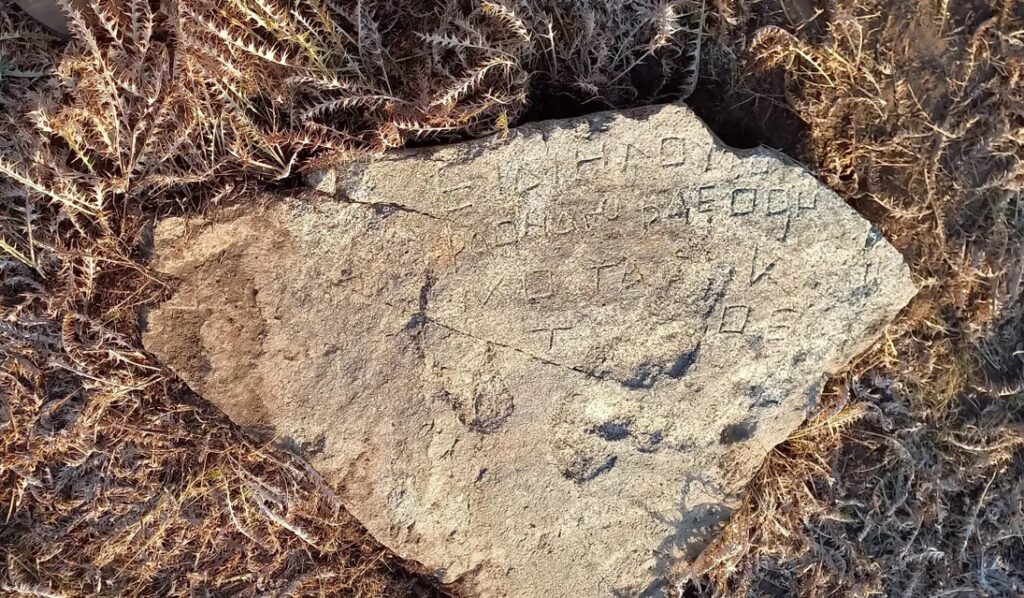Physical evidence of the Greek colonies in Central Asia, particularly in parts of Afghanistan and Tajikistan, is not easy to come by. The ancient river names Oxus and Jaxartes and even the southern Afghan city of Kandahar (‘City of Iskander’ ie Alexander) provide intangible evidence of a kind.
Ancient coins bearing the portraits Greek kings with their famous elephant-head bonnets are physical reminders, as are the buried ruins of some of the Bactrian cities they built, such as Balkh, where finds have included intricately carved Corinthian columns. Occasionally, inscriptions in Greek turn up – as well as inscriptions in local languages written with Greek letters.

Thus there was considerable excitement recently when an unknown inscription in a script linked to Greek, but so far undeciphered, was discovered high in the mountains of western Tajikistan. The discovery was made by Sanginov Khaitali, a resident of the village of Shol in Hisor Sanginov district, who reported his find to local authorities. The inscription is in a gorge of the Almosi River, at a place known as Khoja Mafraj.

Here, at a height of almost 3,000m, archaeologists found a pyramidal rock outcrop with three lines of inscription, made up of 23 individual letters. There had been more, but earthquakes had shattered them – although some fragments were also found, including one with 36 letters carved into it. The letters on the first inscription are yet to be deciphered but are similar to an inscription found at Dashti Navur, near Ghazni in Afghanistan. The text on the second stone is written in Bactrian, but in Greek letters. It has been translated to mean “This is the …of the king of kings, Vima Tactu”. Vima Tactu was the son of Kujuly Kadfiz, the founder of the Kushan kingdom, who ruled about 89-90CE.

According to Bobomulloev Bobomullo, from the Institute of History, Archaeology and Ethnography at Tajikistan’s National Academy of Science, “The discovery of new rock inscriptions in the Almosi gorge replenishes the archaeological map of Tajikistan with new monuments. Along with the famous inscriptions discovered from Surkh Kotal and Rabatak in Afghanistan, it is of world importance.” He says that next year a scientific expedition will continue to study the location of the inscription, where there is a large cemetery, and will also try to reassemble the fallen rocks to help recreate the entire text.

Recent DNA research has revealed that the Saka (Eastern Scythian) tribes that inhabited Eastern Kazakhstan for much of the first millennium BCE had connections to the Greek colonies further south, partly due to trade and partly due to raiding.
This connection marks them off from the ‘Pontic’ Scythians of the Black Sea region and from Saka who lived further to the east. Eventually many of these Saka were driven south into the Bactrian kingdoms by nomadic warriors coming from Eastern China. Some of them then moved on into northern India.


